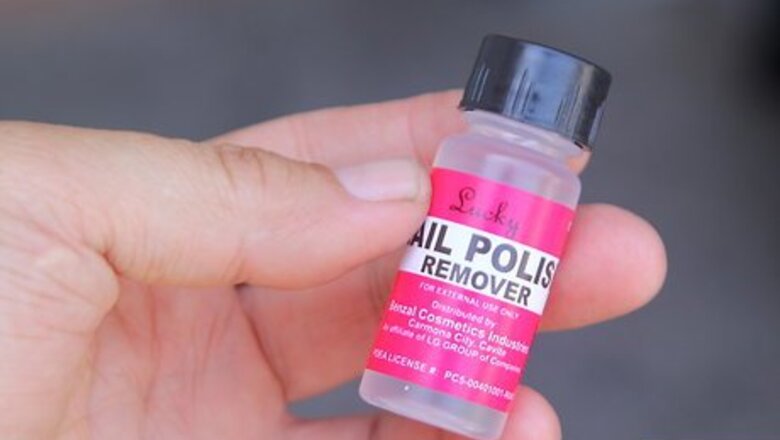
views
Removing Nail Polish from Skin
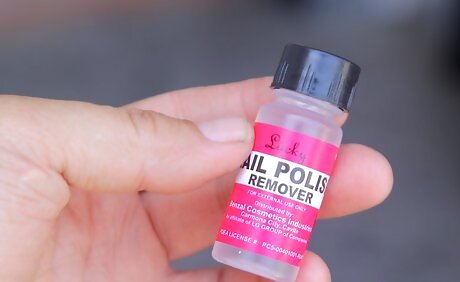
Get a bottle of acetone or nail polish remover. Keep in mind that these products can be very drying and harsh on the skin. They are not recommended for small children or for those who have very sensitive skin. If this happened to you, click here. Non-acetone nail polish remover can work, but it is not as powerful as acetone and will require more work. If you want to remove nail polish from around your nails, click here.
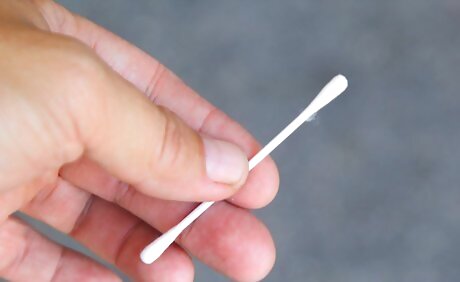
Choose something to apply the acetone or nail polish remover with. For small areas, a cotton ball would work just fine. A towel will work better on larger areas, such as hands, arms, and feet. If you just did your nails, consider using a Q-tip; you can hold the Q-tip by one end, and use the other end to buff the polish away.
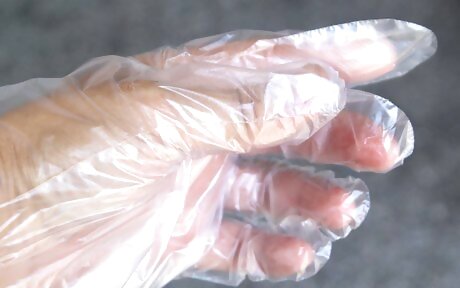
Consider putting on some latex gloves. If you just did your nails, any acetone or nail polish remover will destroy your hard work. If you can't find a Q-tip, it might be a good idea to put on a pair of latex or plastic gloves to protect your pretty, painted nails.
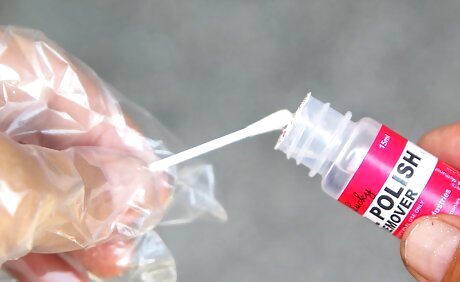
Dampen the cotton ball or towel with the acetone or nail polish remover. You want the cotton ball or towel to be wet, but not soaking or dripping. If necessary, squeeze out the excess moisture with your fingers. If you are using a Q-tip, dip it into the acetone or nail polish remover. Wipe off any excess on the rim of the bottle.
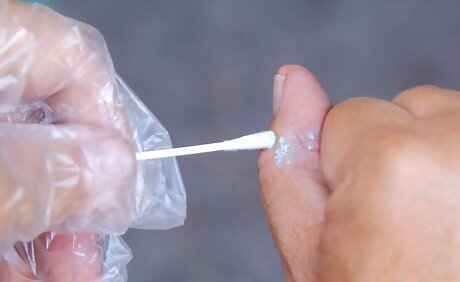
Rub the affected area until the polish comes off. If needed, re-soak the cotton ball or towel. Eventually, the nail polish will come off.
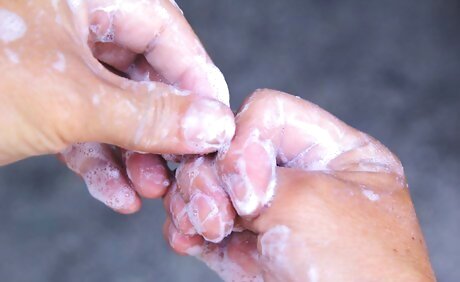
Rinse your skin with soap and water. If you have sensitive skin, you may also want to treat the area with some hand cream or lotion. This will help prevent any dryness.
Removing Nail Polish from Sensitive Skin
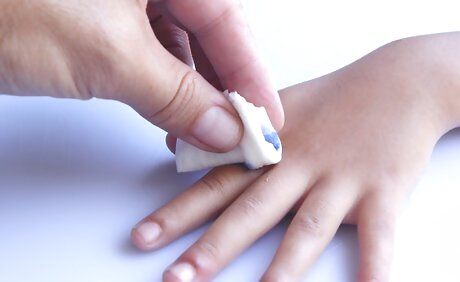
Remove the nail polish while it is still wet using a baby wipe. Wet nail polish is easier to remove while it is wet. The oils in the baby wipe will also help dissolve the nail polish, making it even easier to remove. It is ideal for young children and sensitive areas, such as the face.
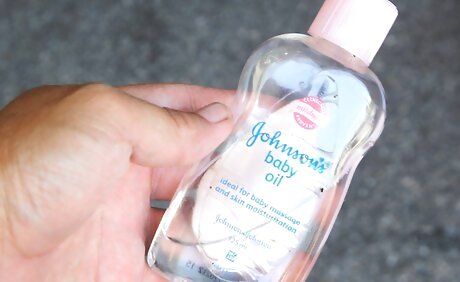
Try using baby oil, coconut oil, or olive oil on sensitive areas, such as the face. Dampen the corner of a soft towel with some oil, and gently rub the affected area. The oil should help dissolve the nail polish, and make it come off. Remove any oily residue with some warm water and gentle soap. The oil will also help nourish and soften the skin.
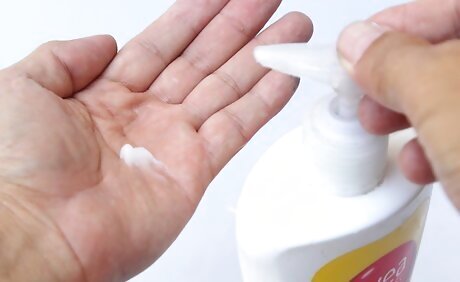
Use non-acetone nail polish remover on hands and feet.Do not use non-acetone nail polish remover on the face. Dampen a cotton ball with some non-acetone nail polish remover and rub the affected area until the polish comes off. Rinse the area with some soap and warm water. Non-acetone nail polish remover is gentler than regular nail polish remover, but it may still leave the skin feeling dry. If this happens, try rubbing some hand lotion or cream over the area once you are done.
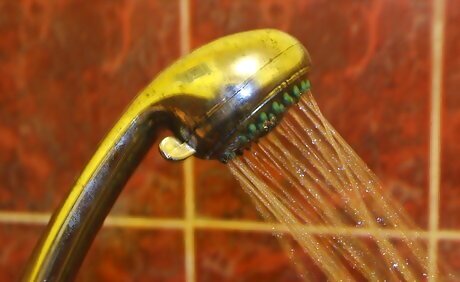
Try taking a bath or shower. Sometimes, soaking in water and a little bit of scrubbing with soap and a wash cloth may be all that's needed to loosen up dried nail polish. Be sure to use warm water, soap, and a mildly-abrasive washcloth or sponge. Gently scrub the area until the nail polish peels off. The warm water should also help it come off. Plan on the bath taking 15 to 20 minutes for best results.
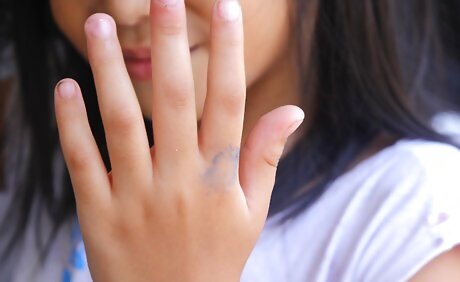
Let the nail polish wear off on its own. The nail polish will eventually wear off after a few days. Throughout the day, the skin will come in contact with clothing, toys, pillows, and towels. All of this will create friction, which will be enough to help peel the polish off. Young children may also learn from this experience, and not paint their face with nail polish again.
Using Other Items
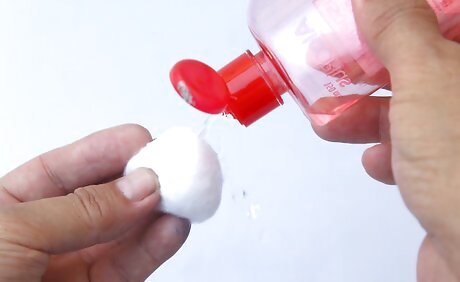
Try using rubbing alcohol or an alcohol-based product. Rubbing alcohol is not as powerful as acetone or nail polish remover. It won't be as effective and may require more work; however, it is gentler and less drying than acetone or nail polish remover. Simply chose an item from the list below, apply/wipe/spray it to your skin, then wipe it off with a clean cloth or towel. Be sure to wash your skin afterwards with soap and water. Here are some things that you can try: Body spray Hand sanitizer Hair spray Perfume Rubbing alcohol Spray-on deodorant Anything else that contains rubbing alcohol
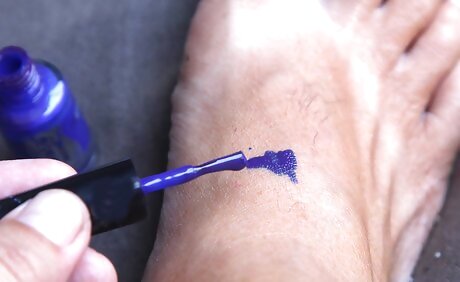
Use some more nail polish to remove dried polish. Brush on some nail polish onto the affected area and leave it on for a few seconds. Wipe it off using a clean cloth before it dries. The fresh polish will help peel off the old polish. You may still have to wash the area afterwards with some soap and water. You can also try using a topcoat.
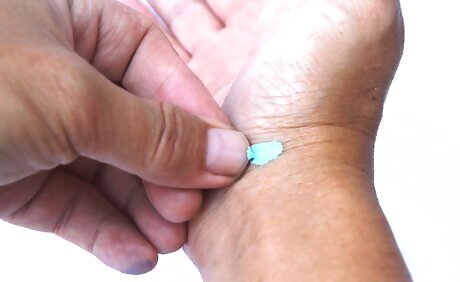
Try picking the polish off. If the polish is in a small area, you can try scratching at it with your fingernail until it peels off.
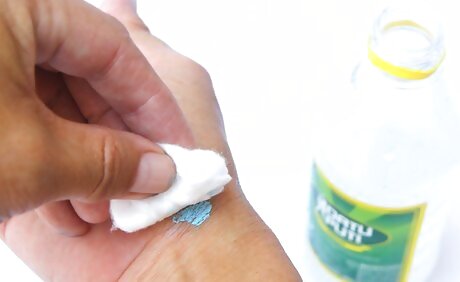
Use vinegar to wipe off nail polish.Don't use this method around cuts or scrapes. White vinegar works best, but you can also use apple cider vinegar instead. Dampen a cotton ball or Q-tip with the vinegar, and wipe it over the nail polish. Keep rubbing until the polish comes off. Wash your skin afterwards with soap and water. You can also make the vinegar more acidic by mixing it with lemon juice. Use one part lemon juice and one part vinegar. You can also use pure lemon juice. This method has had mixed reviews. It works for many people, but not for others.
Removing Nail Polish from Around Nails
Try to remove the polish while it is still wet. If you just painted your nails, wipe it off using a hard, pointed object, like a cuticle pusher or a toothpick. If the nail polish won't come off, wait until it dries before continuing.
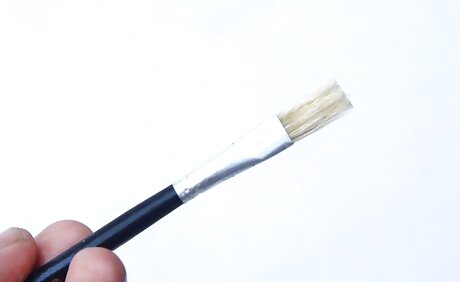
Find a thin, flat brush. Choose a brush with stiffer bristles, such as a lipstick brush. Make sure that you won't be using this brush for anything else again.
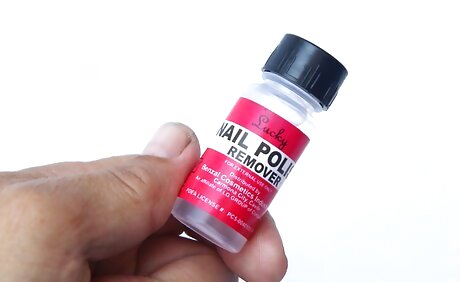
Get some nail polish remover. You can also use acetone instead. It is harsher and more drying than nail polish remover, but it works faster.
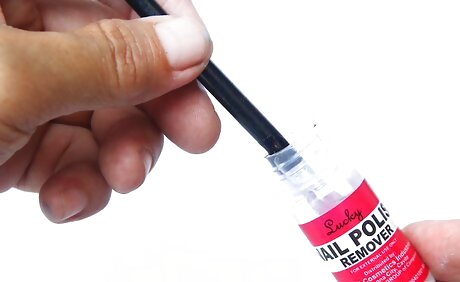
Dip the tip of the brush into the nail polish remover. Try not to get the metal crimp wet, or the glue holding the bristles will melt. This is especially important if you are using acetone.
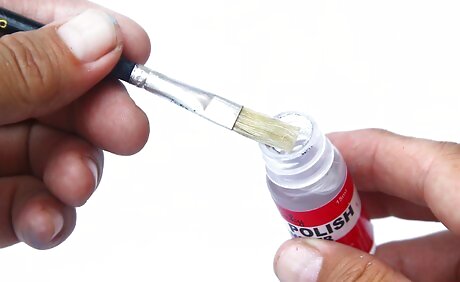
Get rid of off any excess nail polish remover. You can do this by sweeping the bristles across the rim of the bottle. If you have too much nail polish remover on your brush, it may drip onto your nails and ruin your manicure.
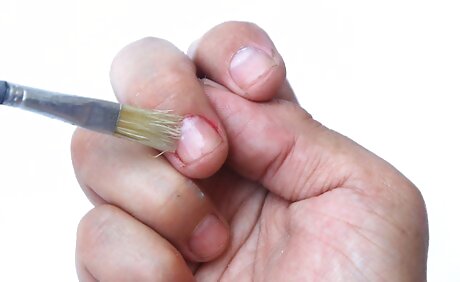
Carefully outline your nails with the brush. Always tilt your finger towards the brush. This will help keep the nail polish remover from dripping onto your manicure. For example, if you got nail polish on the left side of your finger, tilt your finger slightly to the left. If you get too much nail polish remover on your finger, it will drip down the side of your finger instead of onto your manicure.
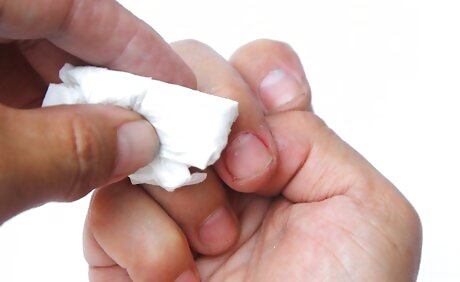
Wipe the area clean with a tissue. Fold a tissue in half, and wipe it around the cuticle area of your nail. This will pick up any residual nail polish remover.
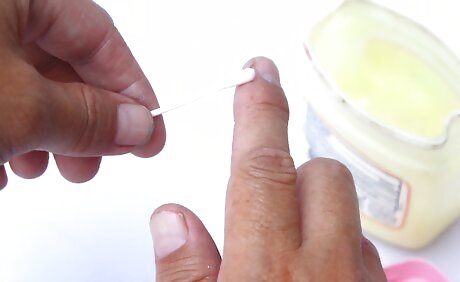
Know what to do in the future. There are a few things you can do to prevent nail polish from getting on your fingers the next time you paint your nails. The most common are to outline your nails with Vaseline or white school glue. These create a barrier between your skin and the nail polish, making clean up a lot easier. Use a Q-tip to apply Vaseline to the skin around your nails before starting your manicure. Once you are done painting your nails, wipe the Vaseline off with another Q-tip. Draw a thin line around your nails using white school glue. Let the glue dry, then paint your nails. Peel the dried glue off when you are done with your manicure.

















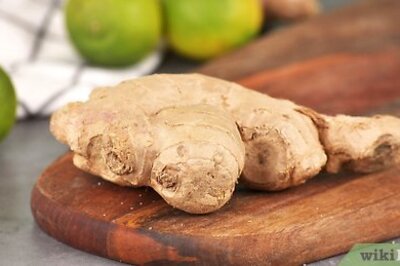
Comments
0 comment